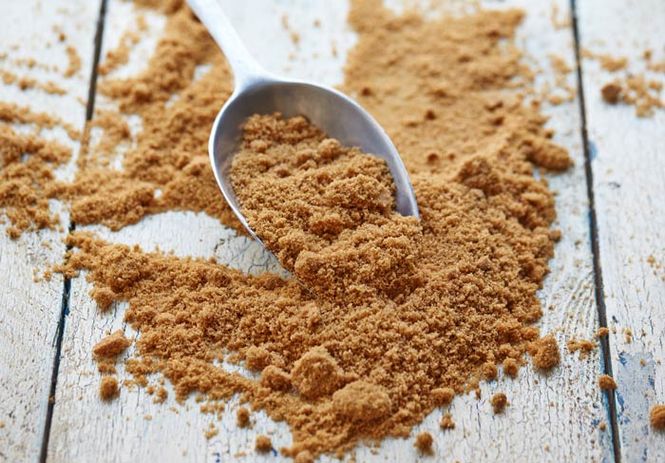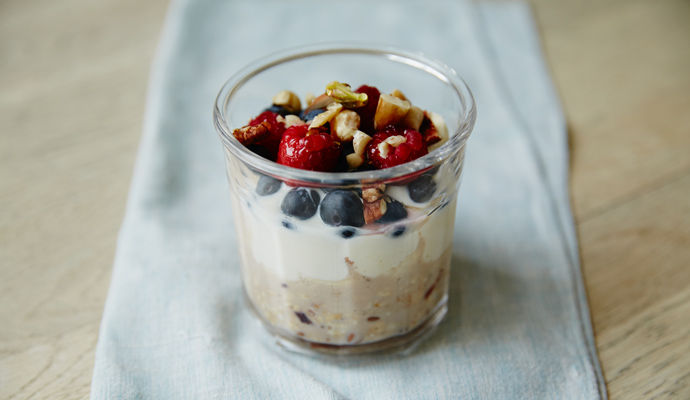How Much Sugar in a Healthy Diet

Sugar
Sugar is a type of carbohydrate and an ingredient found in different foods. On its own, it has very little nutritional value, but it's important to understand the different types of sugar and which foods they're found in.
Sugar is a type of carbohydrate and an ingredient found in different foods. On its own, it has very little nutritional value, but it's important to understand the different types of sugar and which foods they're found in.
WHERE IS SUGAR FOUND?
Naturally occurring sugars are found in whole fruits, veg and dairy products. These types of sugars are not harmful to our health and are not the types of sugar we need to be worried about.
'Free' sugar is the type of sugar that it's recommended we consume less of, and includes the sugar that is added to food and drink, plus sugar found in fruit juice, honey and syrups.
Some people believe the nutritional value of honey, and syrups such as agave, is superior to white and brown sugar, which is extracted from plants called sugar cane and sugar beet. Although there are some very slight nutritional differences between different sugars, they still all contribute to free-sugar intake, and should be consumed in small amounts. Fruit and vegetable juices, smoothies and purées contain nutrients, and so still contribute to our 5-a-day, but because they also contribute to free-sugar intake, the recommended daily amount is no more than 150ml.
Sugar is added to all sorts of foods to make them taste sweet or to preserve flavour. It's not only found in the foods you'd expect – such as cakes, fizzy drinks and desserts – but is often hidden in foods like ketchup, bread and cereal. Check the ingredients list on the food label to see how much sugar it contains. Sugar is not always labelled as plain sugar, so it can be tricky to spot. The following are all sugars: agave nectar, corn sweetener, dextrose, honey, corn syrup, sucrose, fructose, glucose and molasses.
WHY IS TOO MUCH SUGAR UNHEALTHY?
Excess consumption of 'free' sugars can lead to tooth decay, contribute to weight gain and is associated with diet-related diseases. In particular, sugary drinks are associated with an increased risk of type-2 diabetes.
The reference intake – the Government's guideline daily amount – of "total sugars" (both naturally occurring and free sugars) for the average adult is a maximum of 90g per day, but they don't currently provide specific guidelines for children.
The Government's Scientific Advisory Committee on Nutrition (SACN) gives guidance on the consumption offree sugars. They recommend that our daily intake should be less than 5% of our total energy intake. So what does that really mean?
- Children aged 4 to 6 should have no more than 19g or 5 teaspoons of free sugars per day
- Children aged 7 to 10 should have no more than 24g or 6 teaspoons of free sugars per day
- Children aged 11 years and upwards, as well as adults, should have no more than 30g or 7 teaspoons of free sugar per day
– To put this into perspective, a typical 330ml can of fizzy drink can contain up to 35g or 9 teaspoons of free sugar –

To know whether a product or ingredient is high in sugars, read the label and use the quantities above as a guide.
- Food labels list the ingredients in descending order, so in general the higher sugar appears in the list, the more that product contains
- For extra clarity, use the nutritional information panel on the back of the pack. Sugar is listed as 'of which sugars' and is the total sugar content per serving and/or per 100g. But, this figure doesn't distinguish between naturally occurring sugars and free sugars, so read the ingredients list too to give yourself an idea of whether there are likely to be any naturally occurring sugars in that product
- In the UK, many food and drink manufacturers now use traffic light labelling on front of pack as well, signposting key nutrient values – including sugar, saturated fat and salt – as green, amber or red (low, medium or high). Use this information to educate yourself. As a general rule, most of the time you should aim to choose food and drinks that are mainly green and amber across all values, not just sugar!
WHAT ABOUT ARTIFICIAL SWEETENERS?
Artificial sweeteners do not add calories to foods. They can be found in lots of things such as jams, flavoured water, juices and fizzy drinks. Artificial sweeteners include aspartame, sucralose and acesulfame K. All sweeteners used in food and drinks in the UK have been tested and approved as safe by the European Food Safety Authority (EFSA).
Sugar and your health
The reality is that consuming too much sugar will have a detrimental effect on your health:
- Sugar provides the body with empty calories that give us energy without any nutrients. As a result, we eat more without feeling full or satisfied. This leads to an increased risk of weight gain, certain diseases, and a cycle of highs and lows in energy levels, which will leave you feeling tired and craving even more sugar
- Frequent consumption can lead to tooth decay. A report by the Royal College of Surgeons published earlier this year showed tooth decay to be the most common reason five- to nine-year-olds were admitted to hospital
- It can also lead to type-2 diabetes, the levels of which have risen dramatically in recent years. Being overweight or obese also increases your risk of developing the disease. Diabetes UK reports that there are currently 3.3 million people in the UK living with diabetes, and many of these cases are type-2
WHAT TO REMEMBER
The key thing to remember is that overall, eating healthily is all aboutbalance. Indulgent foods, such as those high in fat and/or sugar, can be enjoyed and savoured, but only occasionally, not every day. The majority of our diet should be made up of balanced, nutritious everyday foods.
HOW TO REDUCE FREE-SUGAR INTAKE

• Drink water; not sugary drinks. Sugary drinks are one of the biggest contributors to tooth decay, obesity and type-2 diabetes.
• If having a fizzy drink as a treat, choose a low-sugar option.
• Don't keep sugary drinks and snacks at home.
• Limit portions of fruit juice and smoothies to 150ml per day and dilute with water.
• Swap sugary cereals for sugar-free options; or choose porridge or eggs and toast
for breakfast.
• Choose fresh fruit and yoghurt for dessert rather than sugary options.
• Swap sugary snacks for plain popcorn, or houmous with crunchy veg for dipping.
How Much Sugar in a Healthy Diet
Source: https://www.jamieoliver.com/nutrition/sugar/
0 Response to "How Much Sugar in a Healthy Diet"
Post a Comment